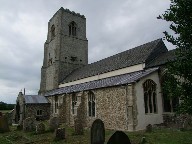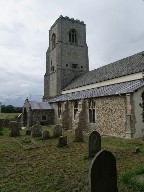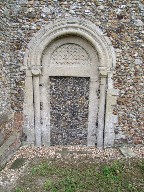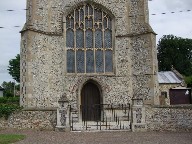| |
|
Holy
Trinity, Marham
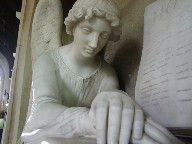 |
|
We
came to Marham at the end of a busy day, and at
last the shower broke. It had been threatening
all day, but it did not last long. In the wake of
the rain, the sun broke out more strongly than
before, and the graveyard of Holy Trinity was
filled with the intense fragrance of high summer.
The birds recommenced their busy chatter, and
insects lifted across the high grass in the
rising heat. It was as lovely a place as we had
been all day. I was travelling with local
historian Paddy Apling, who is a retired food
scientist. In just one corner of Marham graveyard
he identified no less than twelve different
species of wild grass, at least one of which was
rare. The dead of Marham lay all around.
These days, I suppose, the parish is best known
for the huge air base which lies between here and
Swaffham, but this was also a busy place in early
medieval times. Domesday noted two churches, and
on the north side of the nave is a grand Norman
doorway of a style which Sam Mortlock observed is
found only once elsewhere in Norfolk, on the
north transept of Norwich Cathedral.
|
Otherwise,
the church is largely a result of the local farming
wealth of the 14th and 15th centuries, and you step into
an interior which still speaks of that period. The arcade
which separates the nave from the south aisle is from
towards the end of this period, while the font is a
fairly spectacular example of the early 14th Century, its
panels depicting a variety of Decorated tracery.
On the
other side of the great Reformation divide is one of
Norfolk's best sets of James I royal arms, curiously
placed inside the north wall of the tower, where many
people must miss it.
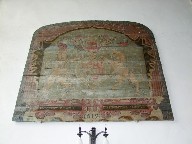 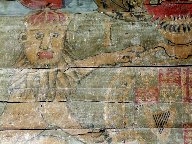 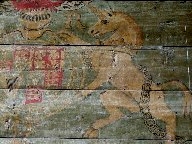
There is a
most curious sight at the east end of the south aisle. As
the Tudor period ended, and the puritans began their rise
to power under the early Stuart kings, there is a rapid
deterioration in the quality and style of English
memorials, a result perhaps of puritan suspicion of the
vanity of art and education. In 1604, John Steward and
his wife were buried here under what looks like half of a
fairly monstrous six-poster bed, their sleeping effigies
watched over by a maudlin lion and garishly recoloured in
recent years. Folding chairs and a large display screen
had been stacked against it, as if the parish were
faintly embarrassed by it, and perhaps no wonder. We put
them back carefully after photographing the thing.
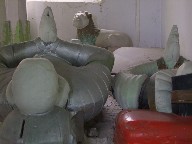 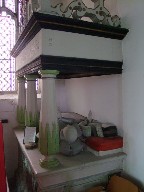  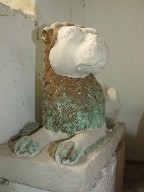 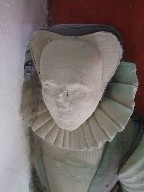 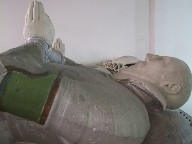
| Aside
from this, I liked very much the sense of a busy
19th Century piety in this church, all of a piece
with some of the fine Victorian houses on the
road to Shouldham. It is easy to imagine the
minor characters of certain Trollope novels
making their way down the village street of a
Sunday to settle themselves into the pews. One of
those 19th Century worthies, Henry Villebois, was
thought of highly enough for a memorial to be
placed behind the pulpit to him by the great
Richard Westmacott, a sculptor best known for his
frieze on the front of the British Museum in
London. Two angels rest in contemplation in front
of the inscription. Mortlock was
uncharacteristically harsh about Westmacott's
work, observing that it is competent but
uninspired. In truth, this memorial might
seem more impressive if it was not so awkwardly
placed. Outside, well-carved and substantial
Victorian gravestones kept a kind of
contemplation of their own, peeping their heads
above the waving ocean of Marham's burgeoning
wild grasses.
|
|
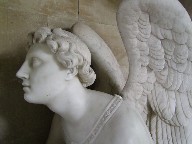 |
|
|
|

